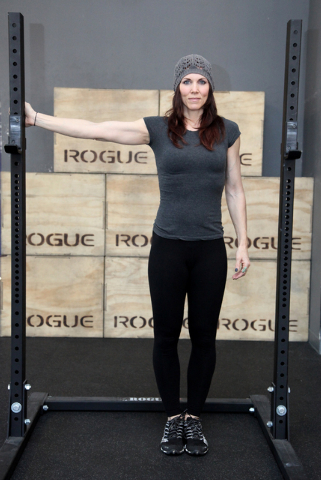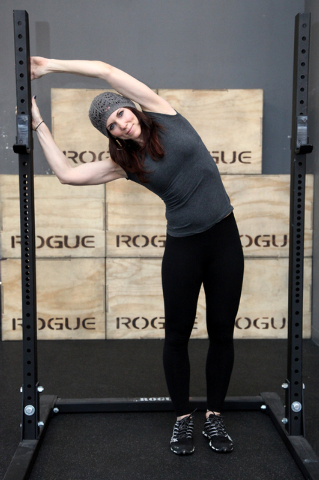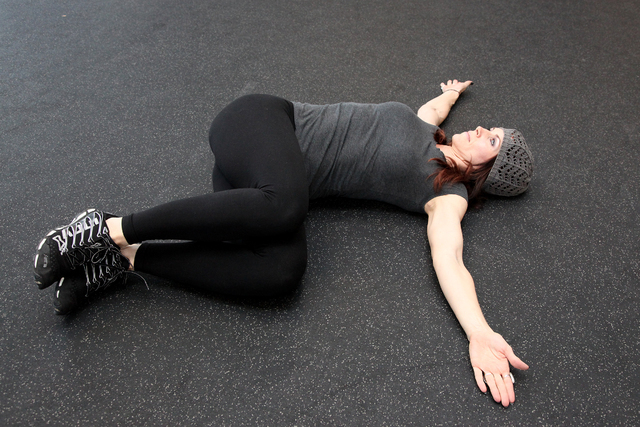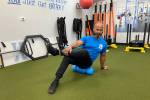How to deal with that disgruntled kitty on your back
Few things are worse than a spastic cat.
For whatever reason, a cat can become disgruntled and then she has to let everyone know. She’ll scratch furniture and mess up the house. Some even get antisocial and lash out at anything that moves.
I have seen a cat behaviorist on television who works with grumpy kitties to make them happy again. He often says he has to work with the owners as well as the felines to restore equilibrium to the household.
I like to think of tight muscles as disgruntled kitties. Once they are all wound up, it is difficult to get them to relax. Once they are relaxed, the smallest thing can set them off and wind them up again. Then you’re back to where you started: tight muscles and angry cats.
What works well with cats also works well with muscles. No, not catnip. The muscles need to relax first before you can start manipulating them with exercise. Too often, we do a quick stretch or two, and then jump right into an intense workout.
One cause for tight muscles could be years of incorrect muscle patterning because of occupation or lifestyle.
One of the easiest things to do to get the muscles to relax is stretching. I often see stretching done at the athlete’s pace and not at the muscle’s pace. That should be reversed. Understanding how muscles work and to which stimulus they respond will improve your overall fitness.
A stretch is the elongating of a particular muscle. Many people think that if they “feel” a stretch, they are doing a good job. Logic dictates that if they “feel” a stretch more intensely, they are getting a better stretch.
Wrong. Truth is that muscles don’t like to be stretched to the point of pain. If you feel pain, you have stretched too far. At that point, the muscle wants to withdraw more. A key is to not stretch to the point that you feel pain.
One goal of stretching is to gain range of motion. Saying a muscle is tight is another way of saying that it is short, shorter than it should be. Stretching them makes them longer. If muscles are as long as they need to be, then they won’t hurt. This allows the joints to have the range of motion needed for specific movements.
One test for muscle length is movement. Can you get into the starting position of a deadlift without the back rounding? Is the squat as low as you want it? Can it be lower? Can you raise your arm over your head without letting the spine move or your elbow bend? Test before your stretch and after you stretch to see if the stretches you are doing are working.
Some keys to stretching are to be gentle and remember to breathe. When stretching, move gently through the range of motion until you start to feel a little tension in the muscle. It shouldn’t hurt.
Breathing with the stretch sounds like a cliche, but it makes a difference. Your breathing is wired to your nervous system and heart rate. If you take short and shallow breaths, your nervous system revs up to prepare for intense movement. If you take deep and calm breaths, it helps relax your nervous system and the muscles connected to it.
Instead of counting seconds during a stretch, increase the range of motion when you exhale. This relaxes your nervous system and lets the muscle know that it’s OK to relax, too. Different muscles may take different amounts of time to relax. Eliminating stiffness could take time.
Stretch while watching television. Depending on the show, you have 30 to 60 minutes to relax some tight muscles. Today’s stretches are for the lats and low back. Many people are tight in these areas, and the stretches are easy to remember.
Tight lats can contribute to poor upper-body posture and shoulder pain when exercising. Explore the range of motion for this stretch. See the videos online for the specifics. The lats are large muscles, and mobilizing them can have a big return.
Low-back tension can be debilitating. Many muscles attach at the low back, and when some are tight, they can pull on others and cause lack of mobility and pain. Loosening them can affect the way you move and even help reduce pain.
Chris Huth is a Las Vegas trainer. He can be reached at 702trainer@gmail.com. If you are a Las Vegas trainer and want to share your love of fitness as a guest coach, please contact him. Consult your physician before beginning any exercise program.































